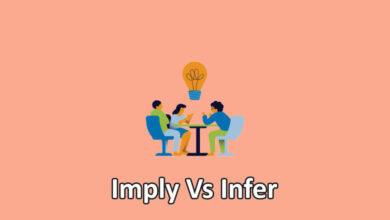Art Vs Craft: Understanding the Key Differences?
Art and craft are often used interchangeably, but they hold distinct meanings. Art typically refers to the expression or application of human creative skill and imagination, producing works to be appreciated primarily for their beauty or emotional power.
On the other hand, craft involves skilled work, often handmade, focused on creating functional or decorative objects. While both involve creativity and skill, art tends to prioritize expression and aesthetics, while craft leans towards functionality and utility.
Art vs. Craft (Comparison Chart)
| Factors | Art | Craft |
|---|---|---|
| What are They? | Art typically refers to the expression or application of human creative skill and imagination, producing works to be appreciated primarily for their beauty or emotional power. | Craft involves skilled work, often handmade, focused on creating functional or decorative objects. |
| Purpose and Intent | It is driven by the artist's need for self-expression or to convey ideas and emotions. | It focuses on creating objects that serve a practical or decorative purpose. |
| Emphasis on Aesthetics vs. Functionality | Art prioritizes aesthetics and emotional impact, often challenging conventional norms and perceptions. | Craft emphasizes both aesthetics and functionality, with an emphasis on the object's utility. |
| Subjectivity vs. Objectivity | Interpretation of art varies greatly between individuals, depending on personal experiences and perspectives. | Craftsmanship and functionality of craft items can be assessed using objective criteria like durability and usability. |
| Freedom vs. Tradition | Artists often have the freedom to explore unconventional materials and techniques. | Craft often adheres to traditional methods and materials, highlighting skill and respect for heritage. |
| Perception and Value | Art is esteemed for its cultural significance, emotional resonance, and intellectual discourse potential. | Craft may be seen as utilitarian despite its artistic merit, potentially undervalued in comparison to art. |
What is Art?
Art is a diverse range of human activities involving the creation of visual, auditory, or performance artifacts that express the creator’s imaginative or technical skill, intended to evoke emotional responses and convey ideas.
It encompasses various mediums such as painting, sculpture, music, literature, dance, and more, serving as a means of communication and expression across cultures and civilizations.
Characteristics of Art
- Creativity: Art is inherently creative, involving the synthesis of ideas, emotions, and techniques to produce unique and original works.
- Subjectivity: The interpretation and appreciation of art are subjective, varying from person to person based on individual perspectives, experiences, and cultural backgrounds.
- Expression: Art serves as a medium for personal or collective expression, allowing artists to convey their thoughts, feelings, and beliefs through their chosen form of artistic expression.
What is Craft
Craft refers to skilled work or activities that involve the creation of objects or artifacts using traditional or contemporary techniques, often with a focus on functionality, aesthetics, and precision.
It encompasses a wide range of disciplines, including woodworking, pottery, weaving, glassblowing, and metalworking, among others, and emphasizes the mastery of specific techniques and materials.
Characteristics of Craft
- Skill and Technique: Craftsmanship emphasizes the mastery of specific skills and techniques, passed down through generations or acquired through formal training, apprenticeships, or self-study.
- Functionality: Unlike art, which prioritizes aesthetic or emotional expression, craft often emphasizes the practical utility or functionality of the finished object, whether it’s a piece of furniture, a piece of clothing, or a decorative item.
- Attention to Detail: Craftsmanship places a strong emphasis on precision, attention to detail, and quality craftsmanship, with artisans dedicating meticulous care and effort to ensure the excellence of their work.
Key Differences Between Art and Craft
- Purpose and Intent: Art is primarily driven by the artist’s desire for self-expression or the communication of ideas, while craft focuses on producing functional or decorative objects with practical utility.
- Emphasis on Aesthetics vs. Functionality: Art prioritizes aesthetics and emotional impact, often challenging conventional norms and perceptions, whereas craft emphasizes both aesthetics and functionality, with an emphasis on the object’s utility.
- Subjectivity vs. Objectivity: The interpretation of art is highly subjective, varying from person to person, while the assessment of craft often involves objective criteria such as craftsmanship, durability, and functionality.
- Freedom vs. Tradition: Art offers greater creative freedom, allowing artists to experiment with unconventional materials, concepts, and techniques, whereas craft often adheres to traditional methods and materials, emphasizing skill and adherence to established norms.
- Perception and Value: Art is often perceived as more prestigious and valued for its cultural significance, emotional resonance, and potential for intellectual discourse, while craft may be undervalued or perceived as utilitarian, despite its artistic merit and technical skill.
Conclusion
Understanding the distinction between art and craft is essential for appreciating the diverse forms of creative expression and craftsmanship present in our world. While art and craft share common elements of creativity and skill, they serve distinct purposes and embody different philosophies.
By recognizing and celebrating both artistry and craftsmanship, we enrich our cultural heritage, foster creativity, and deepen our appreciation for the human capacity to create beauty and meaning in the world.



